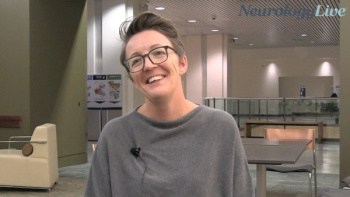
Hearing Impairment May Serve as Preclinical Marker of Neurodegeneration
The authors noted that taken together, the findings suggest that either hearing impairment may affect brain atrophy and neuropathologic burden or that underlying pathologies may impair functional hearing abilities, even prior to dementia onset.
Kristine Yaffe, MD
The findings of a new analysis of data from the National Alzheimer’s Coordinating Center database suggest that functional hearing issues may be a preclinical marker of neurofibrillary neurodegeneration. Importantly, the authors noted that the findings need to be replicated.
In total, 32% (n = 868) of the participants had impaired hearing and 22% used hearing aids (n = 606), which accounted for 68% of the total patients with impaired hearing. Of those without impaired hearing at baseline, 22% developed impaired hearing during follow-up.
“Impaired hearing, reported prior to onset of cognitive impairment, was associated with increased neurofibrillary tangle burden,” wrote study author Kristine Yaffe, MD, professor of psychiatry, neurology and epidemiology, UCSF Weill Institute for Neurosciences, and vice chair, Research in Psychiatry, UCSF School of Medicine, and colleagues. “Impaired hearing in those with cognitive impairment was associated with microinfarcts and neocortical Lewy bodies, but not typical Alzheimer disease pathologic change.”
The assessment included 2755 total autopsied participants aged 55 years and older, all of which had ≥1 clinical evaluation at the National Institute on Aging-funded Alzheimer's Disease Center no more than 2 years prior to death.
There were 580 patients who were cognitively normal at baseline. In that group, impaired hearing was present in 37.6% (n = 218), and 198 of those participants were seen multiple times. Those with impaired hearing (55%) were slightly more likely to become cognitively impaired by the last visit compared to those without impaired hearing (45%).
READ MORE:
Additionally, impaired hearing in cognitively normal patients was associated with a higher Braak stage (relative risk [RR] per 2 stage increase, 1.33; 95% CI, 1.06—1.66), but no other pathologies.
In those with dementia (n = 2175; 79%), impaired hearing was positively associated with microinfarcts (RR, 1.18; 95% CI, 1.00—1.39) and inversely linked with neuritic plaque density (RR per score increase, 0.91; 95% CI, 0.85–0.99). Meanwhile, those with cognitive impairment who developed impaired hearing were associated with neocortical Lewy bodies (RR, 1.26, 95% CI: 1.02–1.55).
“Prior studies have found associations between hearing loss and future risk of dementia, however, imaging studies focusing on hearing loss (with audiometric tests for peripheral hearing) have produced mixed findings,” Yaffe and colleagues wrote. They noted that the findings have included decreased whole brain volume, reduced temporal lobe or auditory cortex volumes, and reduced hippocampal volume—while other studies have shown no such associations.
“Our finding of an association between clinician-rated hearing impairment prior to dementia onset and higher neurofibrillary tangles does not establish the direction or causality of the relationship but is consistent with a link between hearing impairment and hippocampal and temporal lobe neurodegeneration,” they wrote.
Another model examined the link between hearing impairment and the continuum of Alzheimer disease neuropathologic features (ADNC) and neurofibrillary degeneration seen in Alzheimer and aging (PART) diagnostic categories. It showed that those with High ADNC (RR, 1.49; 95% CI, 1.15—1.94) and PART (RR, 1.32; 95% CI 1.06–1.66) were more likely to have impaired hearing compared to those without both.
As well, there was a trend towards an inverse relationship with the APOE ε4 allele (RR, 0.85; 95% CI, 0.65—1.10), though the results were not stratified by the presence of neuritic plaques.
Frontotemporal lobar degeneration (FTLD) was present in 704 participants (tauopathy, n = 415; non-tauopathy, n = 247; both, n = 41) who were added to a secondary analysis. That assessment showed that impaired hearing was roughly 20% less likely (RR, 0.81; 95% CI, 0.68—0.96) in those with tauopathy FTLD, but no association with non-tauopathy FTLD (RR, 1.04; (95% CI, 0.85–1.27).
Yaffe and colleagues acknowledged that additional studies will be needed to establish the temporal order and casual mechanisms, as well as to examine the distribution of neurofibrillary degeneration within brain regions and other tauopathies to better tease apart the identified relationships.
REFERENCES
Brenowitz WD, Besser LM, Kukull WA, et al. Clinician judged hearing impairment and associations with neuropathologic burden. Neurology. Published online August 5, 2020. doi: 10.1212/WNL.0000000000010575
Newsletter
Keep your finger on the pulse of neurology—subscribe to NeurologyLive for expert interviews, new data, and breakthrough treatment updates.



































